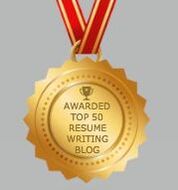STAR METHOD INTERVIEW QUESTIONSThe STAR method interview questions have long been used by recruiters and employers alike. Learning the formula helps to articulate accomplishments in a resume or LinkedIn profile or answer the question "TELL ME ABOUT A TIME WHEN YOU…” in an interview. Below is an overview of the STAR formula, where and when to use the STAR formula, how to create your own STAR story, 18 examples to create STAR stories, and a fill-in-the-blanks exercise to capture the information in the STAR formula to create STAR stories. Articulating Your AccomplishmentsBeing able to articulate your accomplishments and your ability to handle challenges is important in your job search. Having a format to structure your responses makes it easier to create compelling career stories to:
What is the STAR Method Formula?There are four components to the STAR formula: (S) – Situation (T) – Task (A) – Action (R) – Result You can also add an optional section at the end of your STAR story: Reflection. What were the lessons learned from the situation? If the result was failure, you can talk about what you learned from the experience or changed as a result. Where To Use The STAR FormulaThe STAR formula helps you create STAR stories that can be used:
When To Use The STAR FormulaIn a job interview, use STAR stories when you’re asked questions such as:
Create Your Own STAR StoryThe STAR Method's formula has been implemented the questions listed below. Use them as an exercise to create your own STAR stories using the prompts (or come up with your own). Preparing specific examples ahead of time will help you be more confident in your responses. Write out the answers and practice them with a friend or family member or your career coach. Or record yourself (audio or video) and practice your STAR stories until they sound natural, not rehearsed. Here are 18 examples you can use to create your STAR stories (“DESCRIBE A TIME WHEN YOU…”):
Example for Using The STAR Formula To Create a STAR StorySTAR STORY: Collaborated With Others & Had a Conflict With an Employee SITUATION: In my role as manager at GATE Corporation, I added three new team members when we acquired LoneStar Productions. My team of five had all worked together for more than two years at this point, so integrating new staff was a big deal — both for me and the team. Unfortunately, the new employees were used to different processes and methods for project management, which led to problems on the first project we worked on after the acquisition. TASK: As the direct supervisor of the team, it was my job to make sure that the onboarding of the new team members went smoothly. Both my existing team members and my new team members recognized right away that there was a problem, and they looked to me for a solution. ACTION: The first thing I did was sit down with the new team members to get a better understanding of how they were used to tackling projects. I also shared with them the standard operating processes that our team used for project management. Next, I organized a team-building challenge that had nothing to do with the current project — a way for the whole team to get to know each other, without the pressure of the project that was hanging over our heads. RESULT: As a result of the team-building challenge, the employees got to know each other better. The specific team-building exercise focused on communication styles, which had been at the root of the project problems. As the team members interacted more, they were able to communicate more effectively to address some of the differences in project management processes. We ended up blending some of our existing methods with ideas from the new team members, which made the whole process more effective. Even though we had gotten off to a rough start, I ended up bringing the project in on time and on budget, and that team of eight has now been together for the past year. REFLECTION: I always knew the importance of bringing diverse project management workstyles together, but this situation reinforced that. Now, whenever we bring in someone from the “outside” to work on a project, we sit down and make sure we’re on the same page before we dive in. Exercise: Choose a prompt from the list and fill in information for each part of the STAR formula. Then, write a STAR story based on the information. Repeat the process until you have 3-5 STAR stories to draw from.
About the AuthorMandy Fard is a Certified Professional Resume Writer (CPRW, CMRW) and Recruiter with decades of experience in assisting job seekers, working directly with employers in multiple industries, and writing proven-effective resumes. |
Categories
All
powered by Surfing Waves
AuthorMandy Fard is a Certified Professional Resume Writer (CPRW, CMRW) and Recruiter with decades of experience in assisting job seekers, working directly with employers in multiple industries, and writing proven-effective resumes. Archives
July 2024
|
-
Greater Los Angeles
and Kern County
-
[email protected]
.




 RSS Feed
RSS Feed



